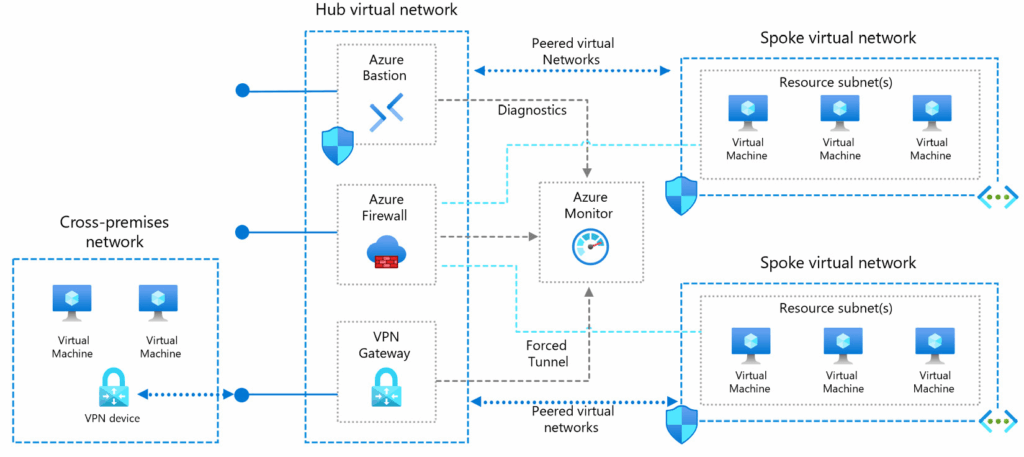The hub and spoke network topology is an excellent choice for enterprises seeking to strike a balance between isolating workloads and sharing crucial services such as identity and security.
This configuration centers around an Azure virtual network, serving as a central point of connectivity – the hub. Surrounding this hub are the spokes, which are virtual networks linked to the hub through peering. In this setup, shared services reside in the hub, while individual workloads are deployed in the spokes, promoting efficient resource utilization as shown in the following figure:

Larger enterprises can take full advantage of the hub and spoke model due to its scalability and flexibility. However, for smaller networks aiming to streamline costs and reduce complexity, a simpler design might be more appropriate. Nonetheless, the spoke virtual networks empower efficient workload isolation, with each spoke independently managed, featuring multiple tiers and subnets, seamlessly connected through Azure load balancers.
One of the greatest advantages of the hub and spoke approach is the freedom to implement these virtual networks in different resource groups and even across various subscriptions. This enables decentralized management of each workload, facilitating flexibility and adaptability. Moreover, the association of different subscriptions with the same or distinct Azure Active Directory tenants promotes efficient sharing of services hosted within the hub network, ensuring a robust yet flexible network architecture for any organization.